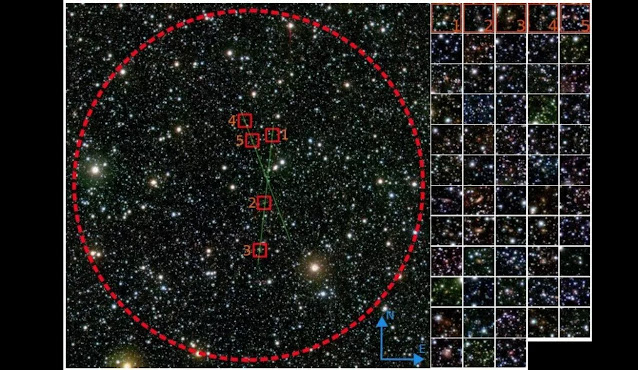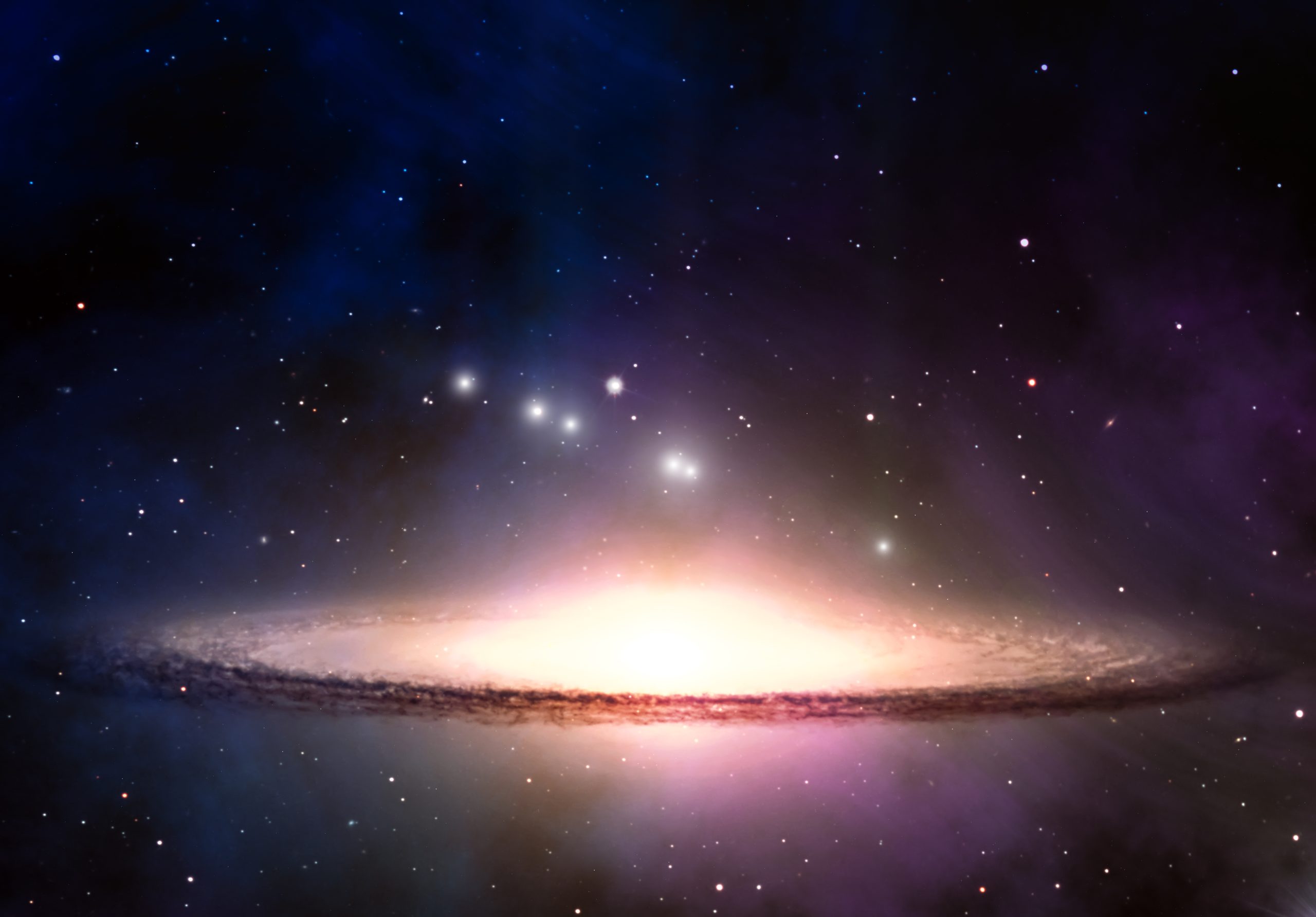Behind the Milky Way’s center, in the unexplored “zone of avoidance,” is a massive, multi-galaxy structure that astronomers have just discovered.


A composite image showing the 58 galaxies clustered together in the “zone of avoidance” behind the Milky Way. (Image credit: Galdeano et al. / ESO)
Astronomers have detected an enormous extragalactic structure hiding in an uncharted region of space far beyond the Milky Way’s center.
This phantom region, known as the zone of avoidance, is a blank spot on our map of the universe, comprising somewhere between 10% and 20% of the night sky. The reason we can’t see it — at least with standard visible light telescopes — is because the Milky Way’s bulging center blocks our view of it; the center of our galaxy is so dense with stars, dust and other matter that light from the zone of avoidance gets scattered or absorbed before reaching Earth’s telescopes.

With telescopes that can detect infrared radiation, a form of energy that is invisible to human sight but potent enough to shine through dense clouds of gas and dust, astronomers have had more success learning about the secrets of the zone. Although little is known about the large-scale objects that lurk there, infrared studies of the zone of avoidance have discovered evidence of thousands of individual galaxies glowing through the cosmic mist.
In a report published on October 28 on the online archive arXiv.org, researchers have now merged data from multiple of those infrared studies to identify the largest structure ever discovered in the zone of avoidance. (Although it has been submitted for review to the journal Astronomy and Astrophysics, this paper has not yet undergone peer review.)

The intriguing object, which is about 3 billion light-years away from Earth, looks to be a sizable cluster of galaxies brought together by a common center of gravity. The authors of the study discovered evidence of at least 58 galaxies clustered together in a small plot of the zone of avoidance using observations from the VVV Survey, a survey that studies the Milky Way’s central bulge at infrared wavelengths using the Visible and Infrared Survey Telescope for Astronomy in Chile.
.jpg)
Galaxy clusters are the largest gravitationally-bound objects in the universe; the largest known clusters contain hundreds of thousands of galaxies bunched together. Unfortunately, it’s impossible to tell just how wide or massive the newly discovered cluster is, given the vast distances and myriad obstructions sitting between the cluster’s stars and Earth.
However, the mere detection of this colossal object shows that the zone of avoidance may not be as inscrutable as was once thought. Future infrared studies — including potential observations by the James Webb Space Telescope, which has already used its infrared camera to take the deepest image of the universe to date — should further help scientists unlock the hidden secrets beyond the Milky Way’s bulge.








